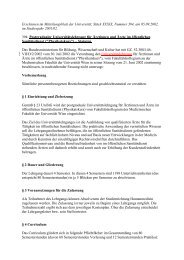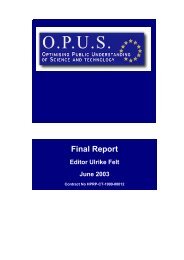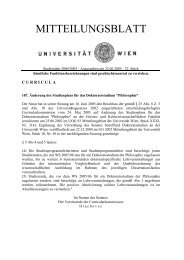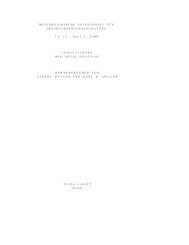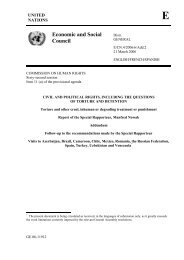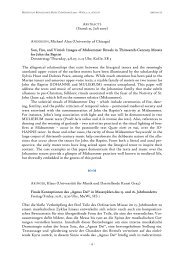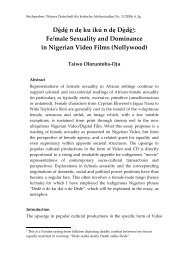INDONESIA EXECUTIVE SUMMARY Indonesia is a multiparty ...
INDONESIA EXECUTIVE SUMMARY Indonesia is a multiparty ...
INDONESIA EXECUTIVE SUMMARY Indonesia is a multiparty ...
Create successful ePaper yourself
Turn your PDF publications into a flip-book with our unique Google optimized e-Paper software.
<strong>INDONESIA</strong> 27<br />
impact of th<strong>is</strong> implementation varied across the province but, continuing the<br />
pattern of the last few years, in general appeared to be less intrusive due to<br />
improved government oversight of the Sharia police. The most v<strong>is</strong>ible impact on<br />
women’s rights appeared to be the enforcement of dress codes. It was not<br />
uncommon for Sharia police to briefly stop and lecture women whose dress did not<br />
conform to local Sharia requirements on appropriate attire.<br />
Local governments and groups in areas outside Aceh also undertook campaigns to<br />
promote conformity by women with the precepts of Sharia. Local regulations in<br />
some areas mandated the wearing of Islamic dress by government employees.<br />
Vigilance in enforcing separation of sexes, fasting, and dress codes increased<br />
during Ramadan. The Min<strong>is</strong>try of Home Affairs <strong>is</strong> responsible for “harmonizing”<br />
local regulations that are not in line with national leg<strong>is</strong>lation. During the year, the<br />
min<strong>is</strong>try evaluated 9,000 local regulations and cancelled 351 deemed in conflict<br />
with national law.<br />
Women faced d<strong>is</strong>crimination in the workplace, both in hiring and in gaining fair<br />
compensation; however, there has been progress in that area. According to<br />
International Labor Organization (ILO) reports, women’s hourly wages as a<br />
percentage of men’s wages continued to increase. Women in admin<strong>is</strong>trative and<br />
managerial jobs reportedly earned more than their male counterparts in 2008.<br />
However, women were still underrepresented at the managerial level. According<br />
to the government, women constituted 45 percent of all civil servants as of June<br />
2009 but less than 9 percent of senior civil servants. Some activ<strong>is</strong>ts said that in<br />
manufacturing, employers relegated women to lower-paying, lower-level jobs.<br />
Like their male counterparts, many female factory workers were hired as day<br />
laborers instead of as full-time permanent employees, and companies were not<br />
required to provide benefits, such as maternity leave, to day laborers. By law, if<br />
both members of a couple worked for a government agency, the couple’s head-ofhousehold<br />
allowance was given to the husband.<br />
Jobs traditionally associated with women continued to be significantly undervalued<br />
and unregulated. For example, domestic workers received little legal protection.<br />
Under the labor law, domestic workers are not provided with a minimum wage,<br />
health insurance, freedom of association, an eight-hour work day, a weekly day of<br />
rest, vacation time, or safe work conditions. Consequently, as reported by NGOs,<br />
abusive treatment and d<strong>is</strong>criminatory behaviour continued to be rampant.<br />
Children<br />
Country Reports on Human Rights Practices for 2011<br />
United States Department of State • Bureau of Democracy, Human Rights and Labor




